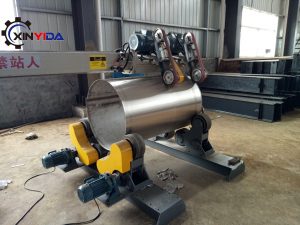The purpose of a polishing machine is to restore or improve the surface quality of materials by removing imperfections, scratches, or blemishes and creating a smooth and shiny finish.Polishing machines are commonly used in industries such as automotive, metalworking and manufacturing.
Here are some key purposes and benefits of using a polishing machine:
Surface Smoothing: Polishing machines utilize abrasive materials, such as polishing compounds, pads, or wheels, to remove surface imperfections, roughness, or scratches from materials. This process helps to create a smooth and uniform surface finish.
Enhancing Appearance: Polishing machines are often used to enhance the aesthetic appeal of objects or materials. By removing scratches, oxidation, or dullness, the machine can restore or improve the shine, luster, and overall appearance of the surface.
Removing Oxidation or Corrosion: Polishing machines can effectively remove oxidation, corrosion, or tarnish from metal surfaces. This helps to restore the original color, shine, and condition of the metal.
Preparing for Coating or Painting: Prior to applying coatings, paint, or other surface treatments, a polishing machine can be used to prepare the surface by removing any contaminants, roughness, or imperfections. This ensures better adhesion and a smoother finish for the applied coating.
Precision Finishing: Polishing machines can achieve precise and consistent surface finishes on various materials, allowing for tight tolerances and achieving specific requirements for industrial or manufacturing applications.
Material Removal: In addition to surface smoothing, polishing machines can also be used for controlled material removal. This is particularly useful for shaping or refining objects or components made from materials like metal, wood, or plastic.
Time and Labor Savings: Using a polishing machine can significantly reduce the time and effort required for manual polishing or finishing tasks. It allows for faster and more efficient processing of materials, saving both time and labor costs.
It’s important to note that different types of polishing machines, such as rotary polishers, orbital polishers, or buffing machines, may have specific applications and features based on the materials and surface finishes required. The choice of polishing machine and the specific polishing techniques used depend on the material, desired finish, and the level of precision required for the particular application.

